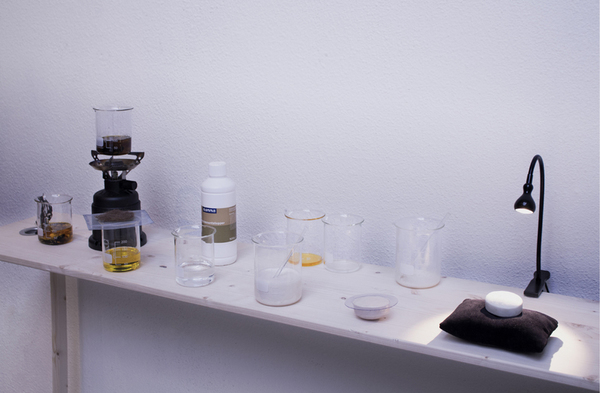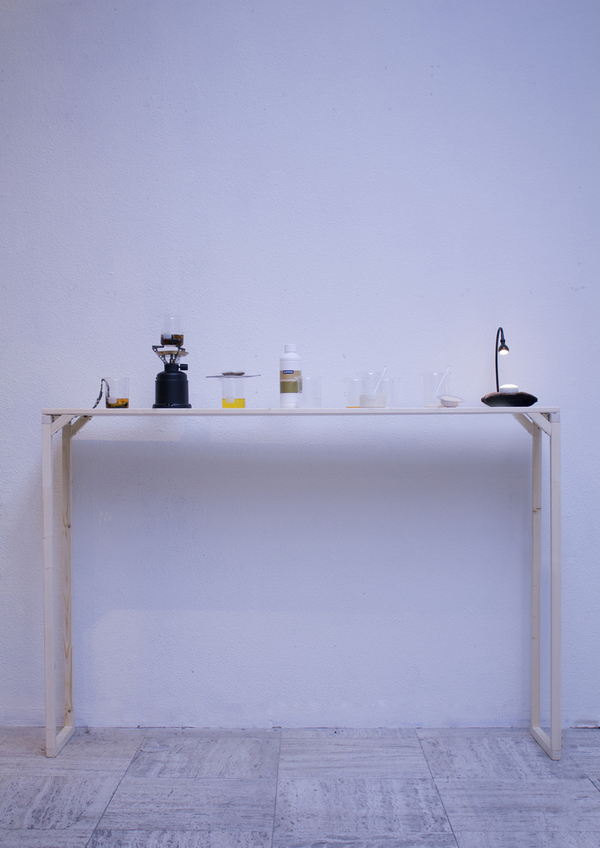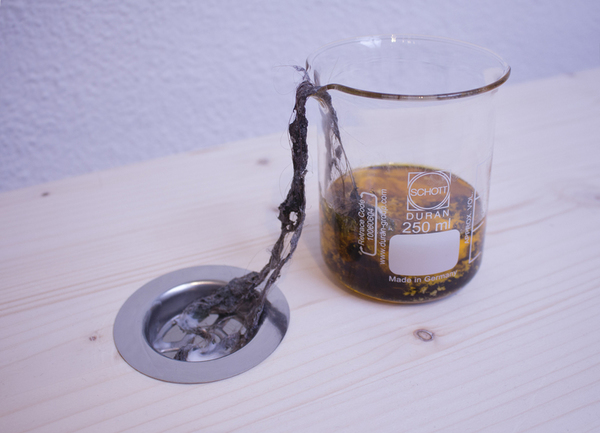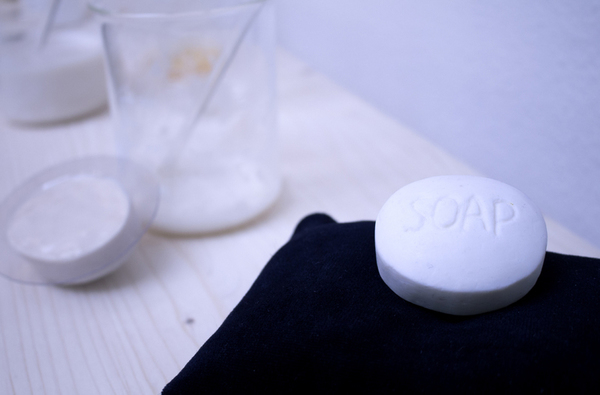Sink Soap
Contents
Author: Anniek van Mierlo
Most people who share their shower with a long-haired person are familiar with this problem: the water remains in the shower after showering. The drain has to be cleared. It is a dirty and odorous task, which we postpone until the water will run down our hallways. The kitchen sink is cleared more easily with chemicals like natrium hydroxide (NaOH), better known as drain cleaner. The world beyond our drain is something we do not think about.
I decided to filter the water which runs through our drain to see what it consists of. What I harvested was a mixture of sand, dust, fat, left-over soap, hair and probably a lot more human and animal remains which weren't visible to the naked eye. When I researched the substances I collected, I found out that fat is an ingredient of soap. Soap is actually a product of saponification, which occurs when fat is mixed with lye. And lye is the same thing as drain cleaner dissolved in water, so in theory it is possible to make soap with drain leftovers only.
I googled 'how to make soap' and followed the steps of a random youtube tutorial. The lab set-up shows how the fat is boiled and filtered. Before the fat clots, it should be mixed with the dissolved drain cleaner. After stirring for half an hour, the soap has to harden for a week in a mould before it is ready to reuse.
Every piece of sink soap is unique, because the fats that end up in your drain differ from day to day. When you've had the whole family over for dinner, it'll show in your kitchen sink after washing the dishes. But even if you go out for dinner the fat from your skin when you wash is visible in your drain. This is also why the soap in every household smells different. It even smells different per person and even per meal. The smell is very subtle though, because of the boiling, filtering and the chemical reaction with the Lye.
Anniek van Mierlo, 2015
Anniek van Mierlo is a WdKA Product Design student with a minor in Sustainability.Links
CONTRIBUTE
Feel free to contribute to Beyond Social.
Author: Anniek van Mierlo
'What is there left to win?' I asked myself. What can still be done in a household when it comes to reuse? A new use for every inch of trash can be found on the internet, so I wanted to challenge myself to finding a piece of home that was still unexplored. I searched for places that weren't likely to be used for reuse and I found one place in the form of a very filthy drain.
Most people who share their shower with a long-haired person are familiar with this problem: the water remains in the shower after showering. The drain has to be cleared. It is a dirty and odorous task, which we postpone until the water will run down our hallways. The kitchen sink is cleared more easily with chemicals like natrium hydroxide (NaOH), better known as drain cleaner. The world beyond our drain is something we do not think about.
I decided to filter the water which runs through our drain to see what it consists of. What I harvested was a mixture of sand, dust, fat, left-over soap, hair and probably a lot more human and animal remains which weren't visible to the naked eye. When I researched the substances I collected, I found out that fat is an ingredient of soap. Soap is actually a product of saponification, which occurs when fat is mixed with lye. And lye is the same thing as drain cleaner dissolved in water, so in theory it is possible to make soap with drain leftovers only.
I googled 'how to make soap' and followed the steps of a random youtube tutorial. The lab set-up shows how the fat is boiled and filtered. Before the fat clots, it should be mixed with the dissolved drain cleaner. After stirring for half an hour, the soap has to harden for a week in a mould before it is ready to reuse.
Every piece of sink soap is unique, because the fats that end up in your drain differ from day to day. When you've had the whole family over for dinner, it'll show in your kitchen sink after washing the dishes. But even if you go out for dinner the fat from your skin when you wash is visible in your drain. This is also why the soap in every household smells different. It even smells different per person and even per meal. The smell is very subtle though, because of the boiling, filtering and the chemical reaction with the Lye.
Anniek van Mierlo, 2015 Anniek van Mierlo is a WdKA Product Design student with a minor in Sustainability.












